Team:UNIPV-Pavia/Project/Results
From 2009.igem.org
(→Ethanol production) |
(→Ethanol production) |
||
| Line 55: | Line 55: | ||
These strain's most important phenotype qualitative characteristics can be summarized as follows: | These strain's most important phenotype qualitative characteristics can be summarized as follows: | ||
| - | *strains that had tetR promoter, J23106 or J23118 upstream of the operon gave very small colonies when plated on selective LB agar plates (with or without 2% of glucose); | + | *strains that had tetR promoter, J23106 or J23118 upstream of the operon gave very small colonies when plated on selective LB agar[[Image: plates (with or without 2% of glucose); |
| - | *strains with 3OC6-HSL inducible system | + | *strains with 3OC6-HSL inducible system upetream of the operon in low copy plasmid could grow when induced with 100 nM and 1 uM HSL; |
| - | *strains with 3OC6-HSL inducible system | + | *strains with 3OC6-HSL inducible system upstream of the operon in high copy plasmid died when induced with 100 nM and 1 uM HSL, but could grow when not induced; |
| - | *bacterial density of strains with 3OC6-HSL inducible system | + | *bacterial density of strains with 3OC6-HSL inducible system upstream of the operon in liquid cultures supplemented]] with 2% or 10% of glucose were higher than the density of all other tested strains grown in the same conditions; |
| + | |||
| + | All the other details can be found on Parts Characterization page, as well as in <partinfo>BBa_K173003</partinfo> Registry page. | ||
| + | |||
These strain's most important phenotype quantitative characteristics can be summarized as follows: | These strain's most important phenotype quantitative characteristics can be summarized as follows: | ||
| - | + | Growth of strains bearing: | |
| + | *3OC6-HSL inducible system upstream of the operon in high copy plasmid (<partinfo>BBa_K173021</partinfo>) uninduced; | ||
| + | *with 3OC6-HSL inducible system upstream of the operon in low copy plasmid (<partinfo>BBa_K173021</partinfo>) uninduced; | ||
| + | *3OC6-HSL inducible system upstream of the operon in low copy plasmid (<partinfo>BBa_K173021</partinfo>) induced with 1 uM of 3OC6-HSL; | ||
| + | *3OC6-HSL inducible system without the operon in high copy plasmid (<partinfo>BBa_F2620</partinfo>) | ||
| + | *a promoterless operon in high copy plasmid (<partinfo>BBa_K173003</partinfo>) | ||
| + | |||
| + | has been monitored in selective LB + 10% glucose starting from an inoculum in the microplate reader (figure below). | ||
| + | |||
| + | {|align="center" | ||
| + | |[[Image:pv_OD_ethanol.jpg]] | ||
| + | |} | ||
| + | |||
| + | |||
| + | Ethanol fermentation capability of these strains in 10%w/v glucose-supplemented LB medium has been tested with three different fermentation protocols (see [[https://2009.igem.org/Team:UNIPV-Pavia/Parts_Characterization#Fermentation experiments| Fermentation experiments]] and [[https://2009.igem.org/Team:UNIPV-Pavia/Parts_Characterization#BBa_K173003 - ethanol producing device| BBa_K173003 - ethanol producing device]] for a detailed description). | ||
| + | |||
| + | The main fermentation results can be summarized as follows: | ||
==Lactose metabolism== | ==Lactose metabolism== | ||
Revision as of 16:01, 20 October 2009

|
|
|
Results & Conclusions | |
Contents |
Experimental results
In this section a summary of "Ethanol? Whey not!" project results is reported. For more information you can visit Parts Characterization section.
Ethanol fermentation
Survival of E. coli TOP10 in ethanol
Different concentrations of ethanol have been added to LB and M9 supplemented with glycerol selective media and E. coli TOP10 (bearing BBa_B0030 BioBrick) survival, when grown in a microplate reader (37°C, automatic protocol) and in a 50 ml falcon tube (37°C, 220 rpm), has been tested.
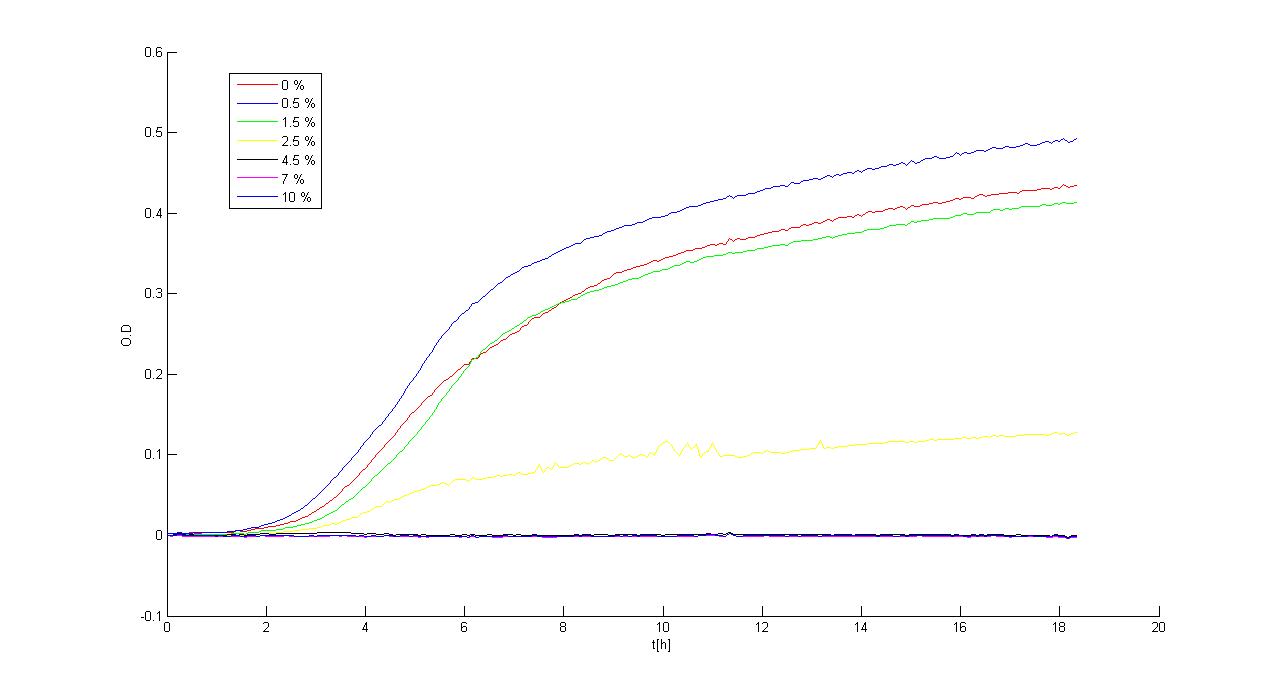
| 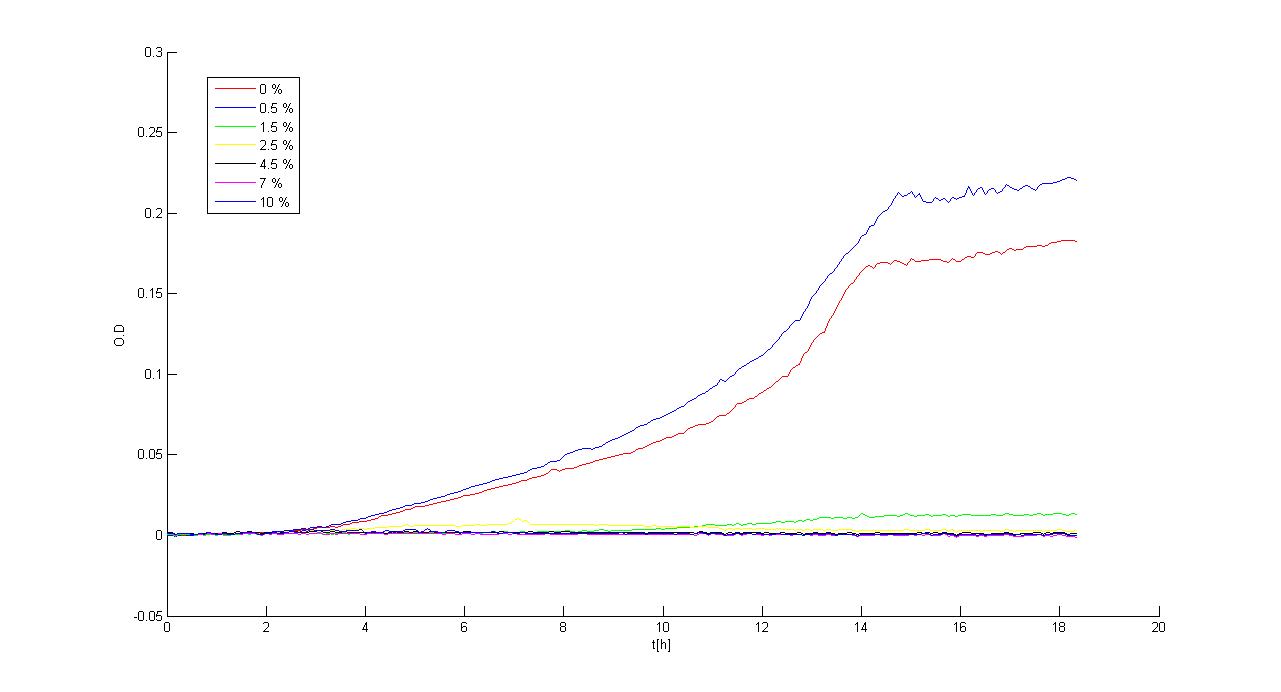
|
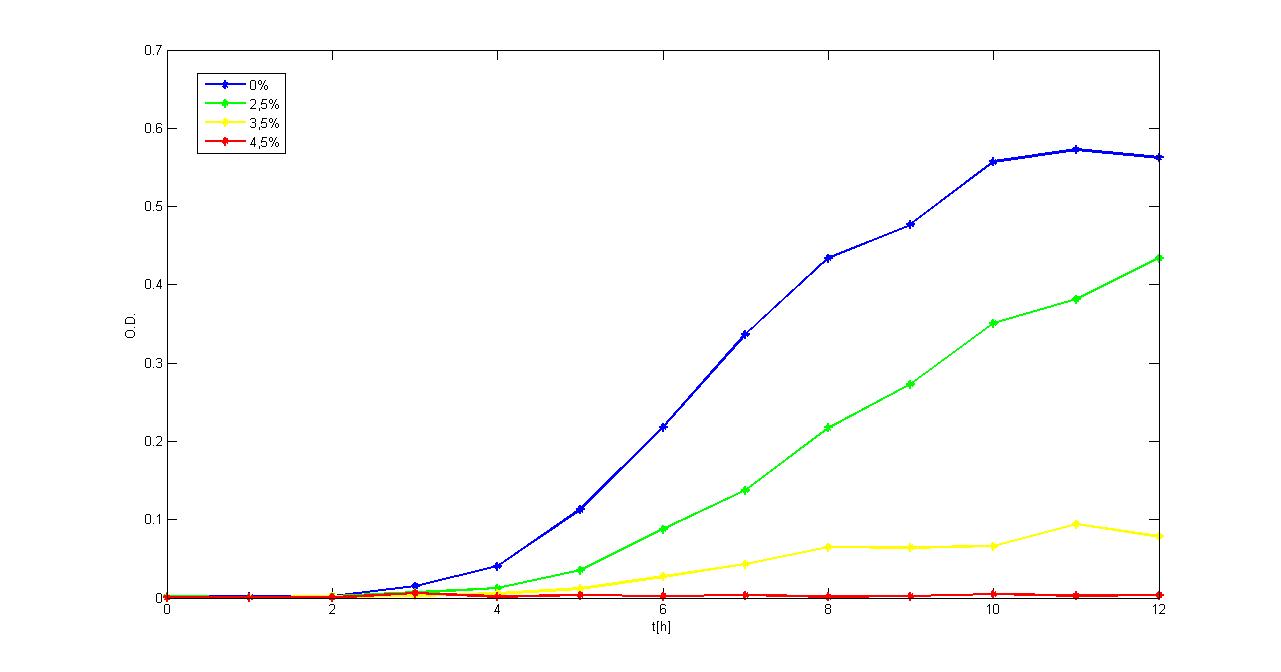
| 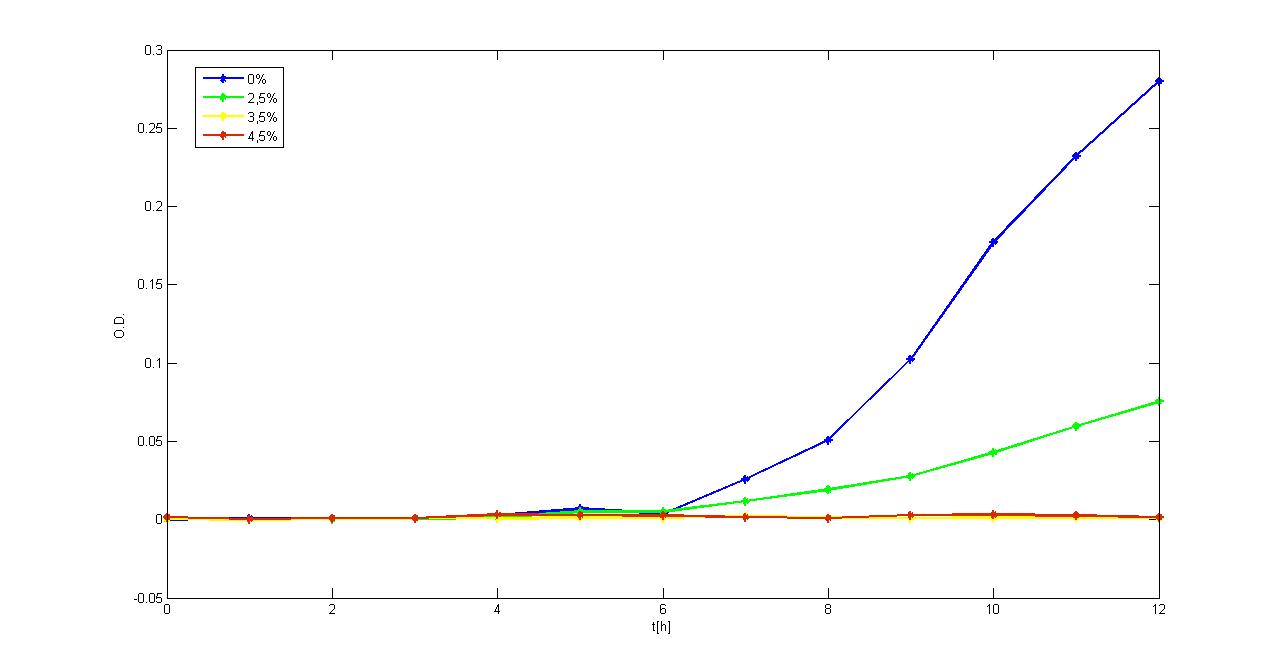
|
Of the concentrations we tested, in the microplate reader bacteria can grow at concentrations up to 2.5%w/v (LB) and 1.5%w/v (M9), while in the 50 ml falcon tube they can grow at concentrations up to 3.5%w/v (LB) and 2.5%w/v (M9).
In general, in the falcon tube bacteria grow better than in the microplate (see Measurement section for details) and this is confirmed by these data: it seems that the threshold concentration of ethanol is higher for growth in falcon tube than in the microplate (for example, at 2.5%w/v in M9, bacteria can survive in the falcon tube, but not in the microplate).
Ethanol production
A synthetic ethanol-producing operon () has been built up by our team and has been assembled downstream of several promoters or devices:
- - tetR promoter (in high copy plasmid)
- - constitutive promoter (in high copy plasmid)
- - constitutive promoter (in high copy plasmid)
- - 3OC6-HSL inducible system (in high and low copy plasmids)
These strain's most important phenotype qualitative characteristics can be summarized as follows:
- strains that had tetR promoter, J23106 or J23118 upstream of the operon gave very small colonies when plated on selective LB agar[[Image: plates (with or without 2% of glucose);
- strains with 3OC6-HSL inducible system upetream of the operon in low copy plasmid could grow when induced with 100 nM and 1 uM HSL;
- strains with 3OC6-HSL inducible system upstream of the operon in high copy plasmid died when induced with 100 nM and 1 uM HSL, but could grow when not induced;
- bacterial density of strains with 3OC6-HSL inducible system upstream of the operon in liquid cultures supplemented]] with 2% or 10% of glucose were higher than the density of all other tested strains grown in the same conditions;
All the other details can be found on Parts Characterization page, as well as in Registry page.
These strain's most important phenotype quantitative characteristics can be summarized as follows:
Growth of strains bearing:
- 3OC6-HSL inducible system upstream of the operon in high copy plasmid () uninduced;
- with 3OC6-HSL inducible system upstream of the operon in low copy plasmid () uninduced;
- 3OC6-HSL inducible system upstream of the operon in low copy plasmid () induced with 1 uM of 3OC6-HSL;
- 3OC6-HSL inducible system without the operon in high copy plasmid ()
- a promoterless operon in high copy plasmid ()
has been monitored in selective LB + 10% glucose starting from an inoculum in the microplate reader (figure below).
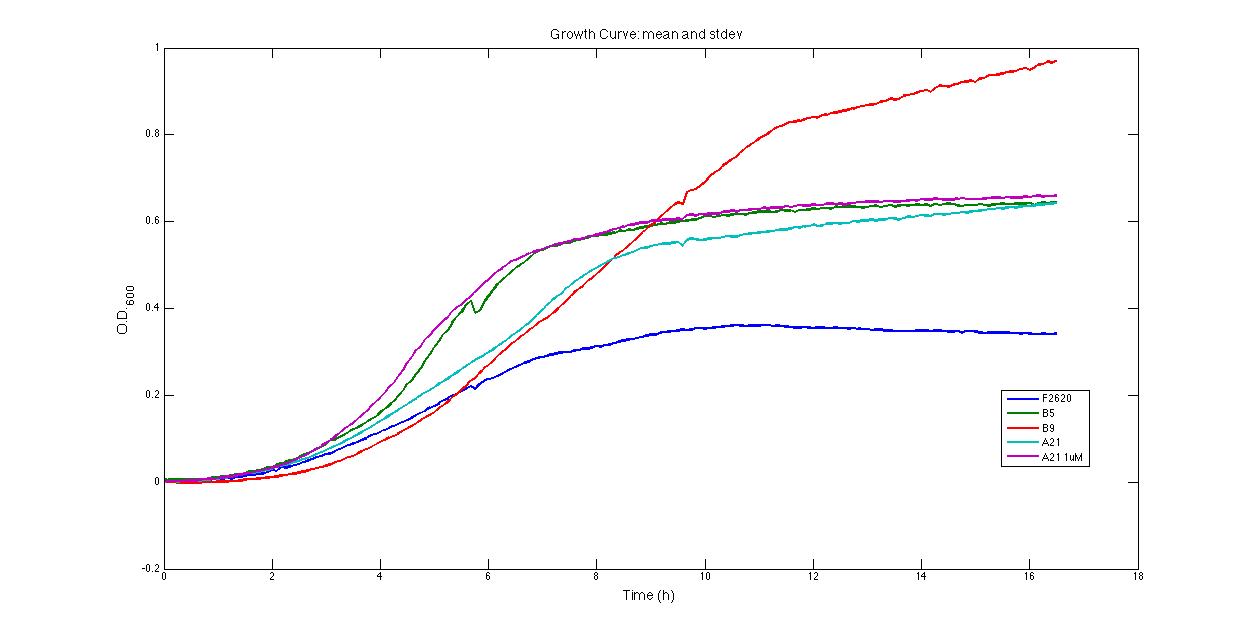
|
Ethanol fermentation capability of these strains in 10%w/v glucose-supplemented LB medium has been tested with three different fermentation protocols (see [experiments| Fermentation experiments] and [- ethanol producing device| BBa_K173003 - ethanol producing device] for a detailed description).
The main fermentation results can be summarized as follows:
 "
"
